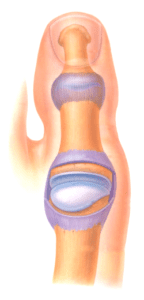Hallux Limitus
Hallux Limitus
 The term Hallux Rigidus describes a limited motion of the big toe joint. The hallux, or big toe, becomes rigid and will no longer move up and down freely. Also known as a dorsal bunion or Hallux Limitius, the condition is most commonly caused by every day wear and tear of the joint and is characterized by an extensive dorsal spurs and arthritic changes in the top half of the joint. As hallux limitus continues to worsen the joint will move less and less. Eventually, we might call it hallux rigidus. Hallux rigidus can be very painful and will often cause patients to change how they walk, leading to more difficulties. Patients with limited motion of their big toes will often have a callus on their big toe as well.
The term Hallux Rigidus describes a limited motion of the big toe joint. The hallux, or big toe, becomes rigid and will no longer move up and down freely. Also known as a dorsal bunion or Hallux Limitius, the condition is most commonly caused by every day wear and tear of the joint and is characterized by an extensive dorsal spurs and arthritic changes in the top half of the joint. As hallux limitus continues to worsen the joint will move less and less. Eventually, we might call it hallux rigidus. Hallux rigidus can be very painful and will often cause patients to change how they walk, leading to more difficulties. Patients with limited motion of their big toes will often have a callus on their big toe as well.
A thorough biomechanical exam will reveal the severity of joint changes and will consider the motion of the first ray of the foot. The first ray includes the metatarsal (see anatomy page) and its motion plays a large role in the motion of the big toe joint. Also, xrays are typically taken to determine the location and severity of the bone spurs on top of the joint and arthritic changes within the joint.
Conservative treatment of hallux limitus might include physical therapy, shoe modifications and often custom made orthotics. With orthotics we can change how the joint and first ray move and possibly avoid surgery. However, if surgery is required the procedure can remove the spurs around the joint that are limiting its motion and may allow a patient to regain much of the range of motion that has been lost.
PLEASE NOTE:
The information contained in this article is not intended to provide advice for individual problems, nor to substitute for professional advice or care from a physician. For answers to specific questions concerning your personal circumstances, you should consult your physician directly.
